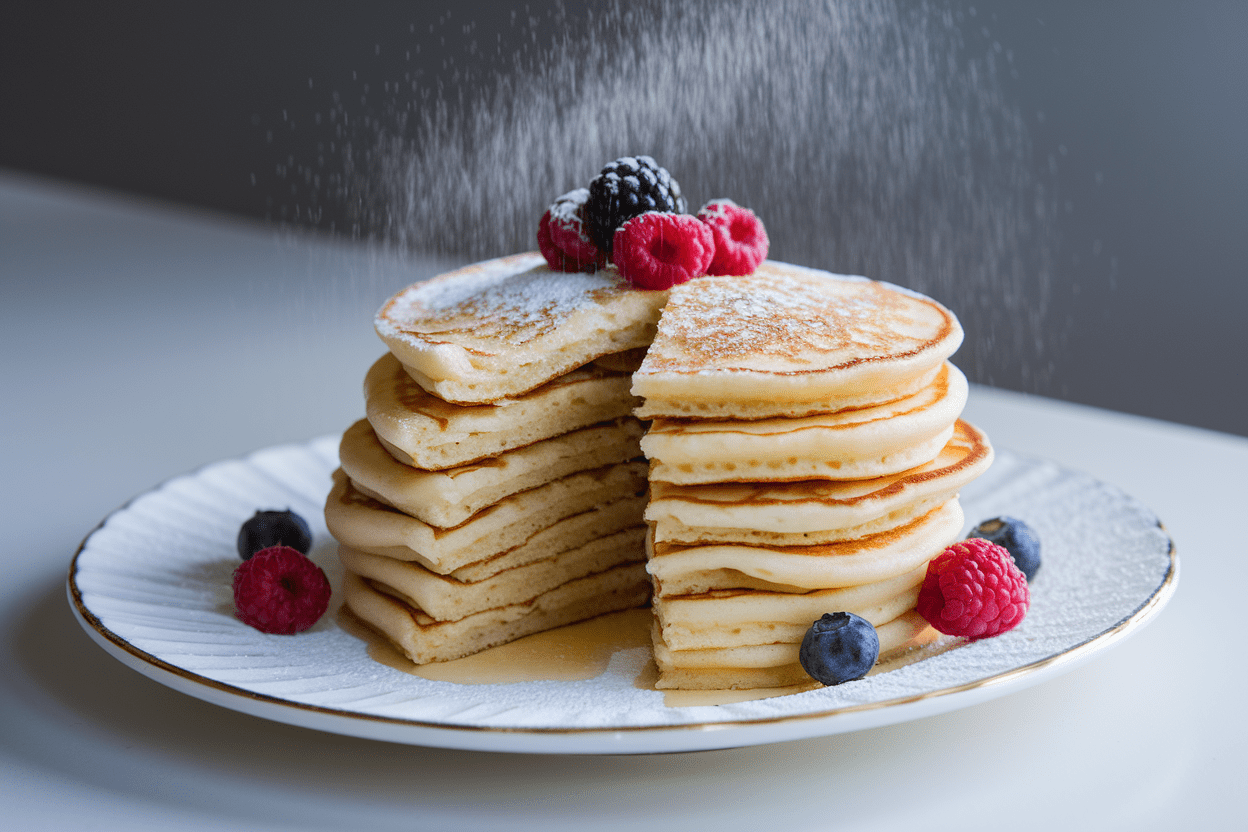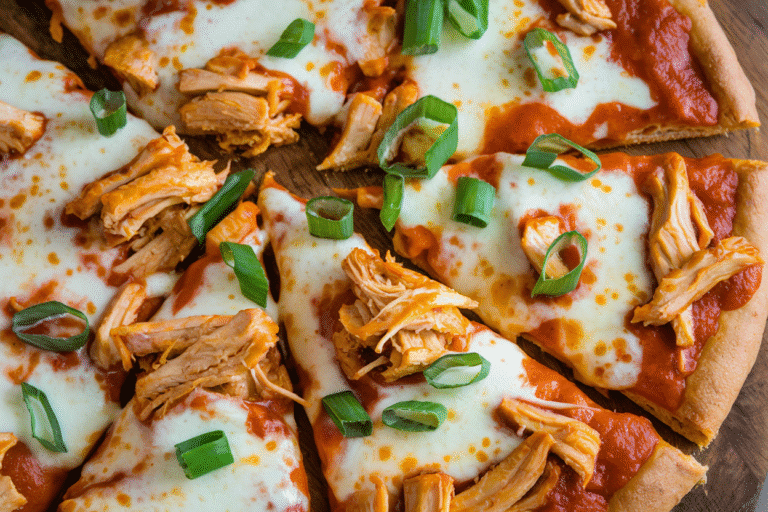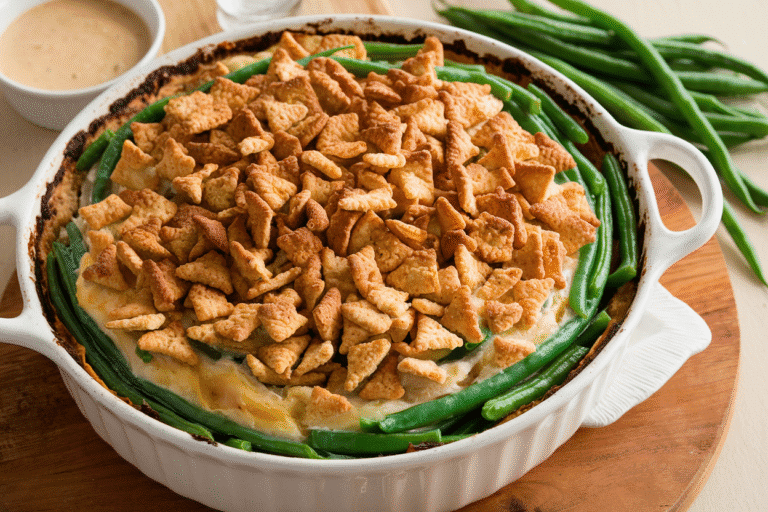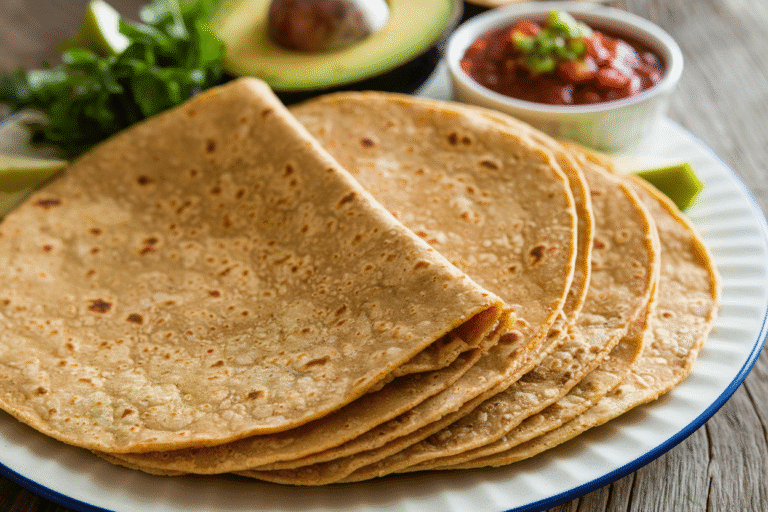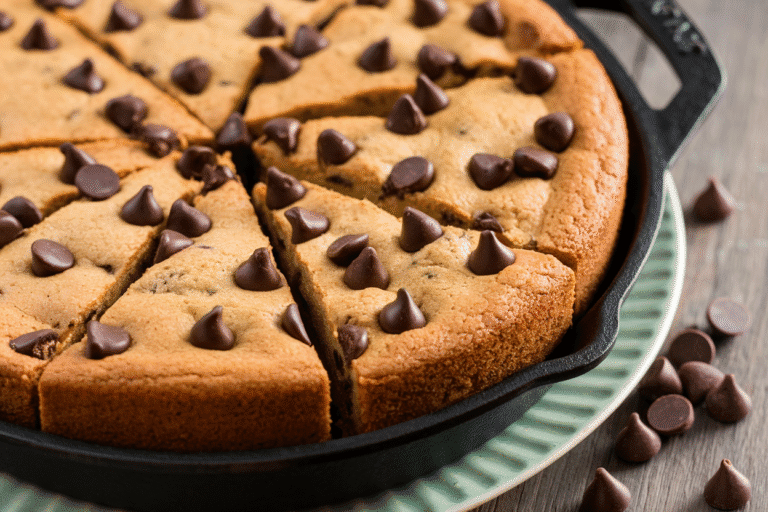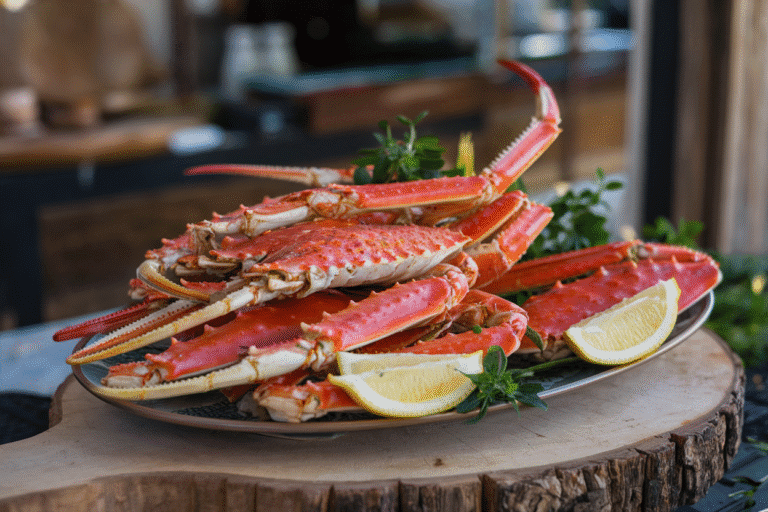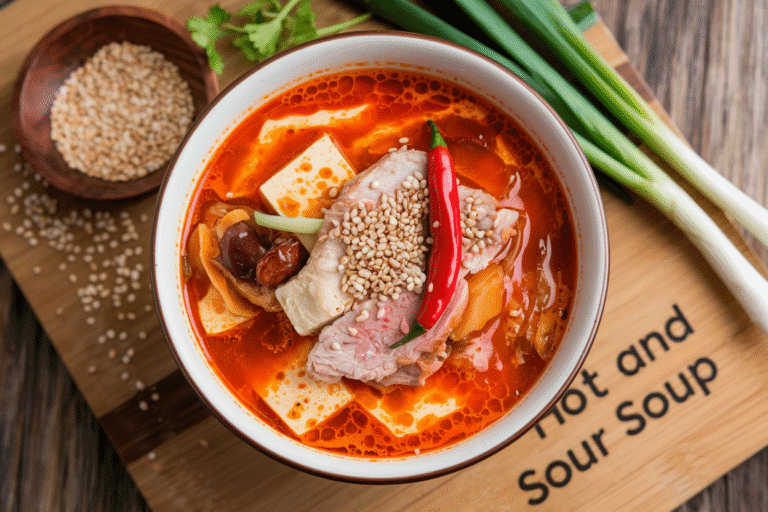This Japanese Pancakes Fluffy Recipe Will Make Your Brunch Go Viral: Clouds You Can Eat
Forget boring flapjacks. These are the pancakes you brag about in group chats and “accidentally” post twice on Instagram. Tall, jiggly, and ridiculously soft—like biting into a warm marshmallow that pays rent.
You don’t need a Michelin kitchen either, just a few smart moves and a little patience. Follow the system and you’ll pull off café-level pancakes that actually rise, not flop. Ready to turn breakfast into a flex?
The Secret Behind This Recipe
Japanese fluffy pancakes (aka soufflé pancakes) live and die by air.
The secret isn’t magic; it’s a stable meringue folded into a rich, eggy batter and cooked low-and-slow with steam. That combo traps micro-bubbles, giving you height and jiggle. Two non-negotiables: stiff, glossy meringue peaks and gentle heat with moisture.
A lid traps steam to set the structure before the bottoms burn. Also, a touch of acid (lemon juice or cream of tartar) stabilizes the egg whites, and a whisper of milk keeps the texture tender, not dry. Think soufflé discipline with pancake fun.
What Goes Into This Recipe – Ingredients
- 2 large eggs, separated (room temperature)
- 2 tablespoons granulated sugar, divided
- 1/4 teaspoon cream of tartar (or 1/2 teaspoon lemon juice)
- 3 tablespoons whole milk
- 1/2 teaspoon vanilla extract
- 1/2 cup cake flour (or 1/2 cup all-purpose flour minus 1 tablespoon, plus 1 tablespoon cornstarch)
- 1/2 teaspoon baking powder
- 1/8 teaspoon fine salt
- 1 tablespoon neutral oil (for the pan; plus more as needed)
- 1 tablespoon water (for the pan to create steam; do not mix into batter)
- Optional toppings: powdered sugar, fresh berries, maple syrup, whipped cream, butter
Let’s Get Cooking – Instructions
- Prep the gear. Use a nonstick skillet with a tight-fitting lid.
Heat it on low for 5 minutes while you make the batter. If you have ring molds, lightly oil them; otherwise, free-form works.
- Separate the eggs. Place whites in a clean, grease-free bowl. Yolks go into a separate medium bowl.
Any fat in the whites = sad meringue, so be strict here.
- Make the yolk base. Whisk yolks with 1 tablespoon sugar until slightly pale. Add milk and vanilla; whisk smooth. Sift in cake flour, baking powder, and salt.
Whisk gently until just combined—no overmixing.
- Beat the meringue. Using a hand mixer, whip egg whites on medium until foamy. Add cream of tartar. Gradually rain in the remaining 1 tablespoon sugar and continue whipping to stiff, glossy peaks.
When you lift the beaters, peaks should stand tall with a slight bend, not collapse.
- Fold like you mean it. Add 1/3 of the meringue to the yolk batter and fold gently to lighten. Add the next 1/3 and fold with a spatula, cutting down the center and sweeping around the bowl. Add the final 1/3 and fold just until you see no streaks.
Keep the volume—this is your pancake liftoff.
- Grease and heat. Lightly oil the warm skillet. Keep heat on low to low-medium; you want patient heat, not aggression.
- Scoop tall mounds. Spoon 3 equal mounds into the pan (or into molds). Aim for about 1/2 cup batter per pancake for height.
Add a little extra batter on top to build vertical stacks.
- Steam assist. Drip 1 tablespoon water into an empty corner of the pan (not on the pancakes). Cover immediately. Cook 4–5 minutes until bottoms are lightly golden and sides look set but still jiggly.
- Flip with confidence. Use two spatulas to gently flip.
If using molds, loosen edges first. Add a few drops more water to the pan, cover, and cook another 3–4 minutes. Pancakes should puff and spring back lightly when touched.
- Serve fast. Slide onto plates and top with powdered sugar, fruit, and syrup.
These beauties deflate slowly over time—serve ASAP for maximum wow.
Keeping It Fresh
These are best hot off the pan—period. If you must hold them, keep them on a wire rack in a warm oven (200°F/93°C) for up to 10 minutes to prevent sogginess. Leftovers?
Refrigerate in an airtight container for 24 hours and reheat gently in a covered nonstick pan over low heat for 2–3 minutes per side, or in a 300°F (150°C) oven for 6–8 minutes. Freezing isn’t ideal because the airy structure suffers, but if you do, wrap individually and reheat covered to revive moisture.
Benefits of This Recipe
- Restaurant-level results at home: You’ll get towering, jiggly pancakes without specialized equipment.
- Lighter than traditional pancakes: The meringue whip means a cloud-like crumb with less heaviness.
- Flexible flavor profile: Lemon zest, matcha, cocoa, or almond extract play very well here.
- Impressive but simple: Techniques are basic—whip, fold, steam—yet the payoff looks pro.
- Great for special occasions: Birthdays, brunch dates, or whenever you want applause at the table.
Don’t Make These Errors
- Underwhipping or overwhipping whites: Soft peaks won’t lift; dry, curdled whites won’t fold. Aim for glossy stiff peaks.
- Rough folding: Mashing the meringue knocks out air.
Fold with a light hand and stop when streaks vanish.
- Too much heat: High heat burns bottoms before centers set. Keep it low, and use the lid for steam.
- Skipping the acid: Cream of tartar or lemon juice stabilizes the foam. Small detail, huge difference.
- Walking away: Timing matters.
Overcooking deflates them; undercooking leaves gooey centers. Stay close.
Alternatives
- Gluten-free: Use a 1:1 gluten-free baking blend plus 1 teaspoon cornstarch to mimic cake flour softness.
- Dairy-free: Swap milk with oat or almond milk and grease with coconut oil. Flavor leans slightly nutty—yum.
- Matcha twist: Whisk 1–2 teaspoons matcha into the dry ingredients for earthy green clouds.
- Chocolate version: Replace 1 tablespoon flour with cocoa powder and add 1 tablespoon extra sugar to balance bitterness.
- Citrus pop: Add 1 teaspoon lemon zest to the yolk mixture for a bright, café-style profile.
FAQ
Why did my pancakes deflate after cooking?
A little deflation is normal—these are soufflé-adjacent.
Major collapse usually means undercooked centers or overfolded batter that lost too much air. Cook covered on low heat long enough to set the middle and fold gently to keep volume.
Can I make the batter ahead of time?
Not really. The meringue starts to weep and lose structure within minutes.
If you must stage, prep dry ingredients and separate eggs ahead; whip and fold right before cooking. IMO, fresh is king here.
Do I need ring molds for height?
No. Molds help shape and stack the batter, but tall free-form dollops work if your batter is stable.
The key is thicker mounds and patient steaming under a lid.
How do I know when to flip?
Look for set edges, a gentle jiggle, and light browning underneath. If the spatula sticks, give it another 30–45 seconds. Better to wait than to tear a half-set pancake—experience talking.
Can I double the recipe?
Yes, but whip the whites in two batches to avoid overfilling the bowl and losing control.
Cook in rounds and keep finished pancakes warm in a low oven briefly.
What pan works best?
A heavy nonstick skillet with a lid is ideal for even heat and steam retention. Griddles without lids make it harder to trap moisture; you can cover with an inverted sheet pan in a pinch, FYI.
My meringue won’t reach stiff peaks. Help?
Ensure the bowl and beaters are squeaky clean, add cream of tartar early, and use room-temp whites.
Start on medium speed, then increase to medium-high; dumping sugar too fast can sabotage volume.
Wrapping Up
This japanese pancakes fluffy recipe is all about controlled air, gentle heat, and a tiny bit of swagger. Nail the meringue, fold with care, and let steam do the heavy lifting. In return, you get sky-high pancakes that wiggle like Jell-O and taste like a hug.
Make them once and your brunch game levels up—permanently. Now go claim your stack and your bragging rights.
